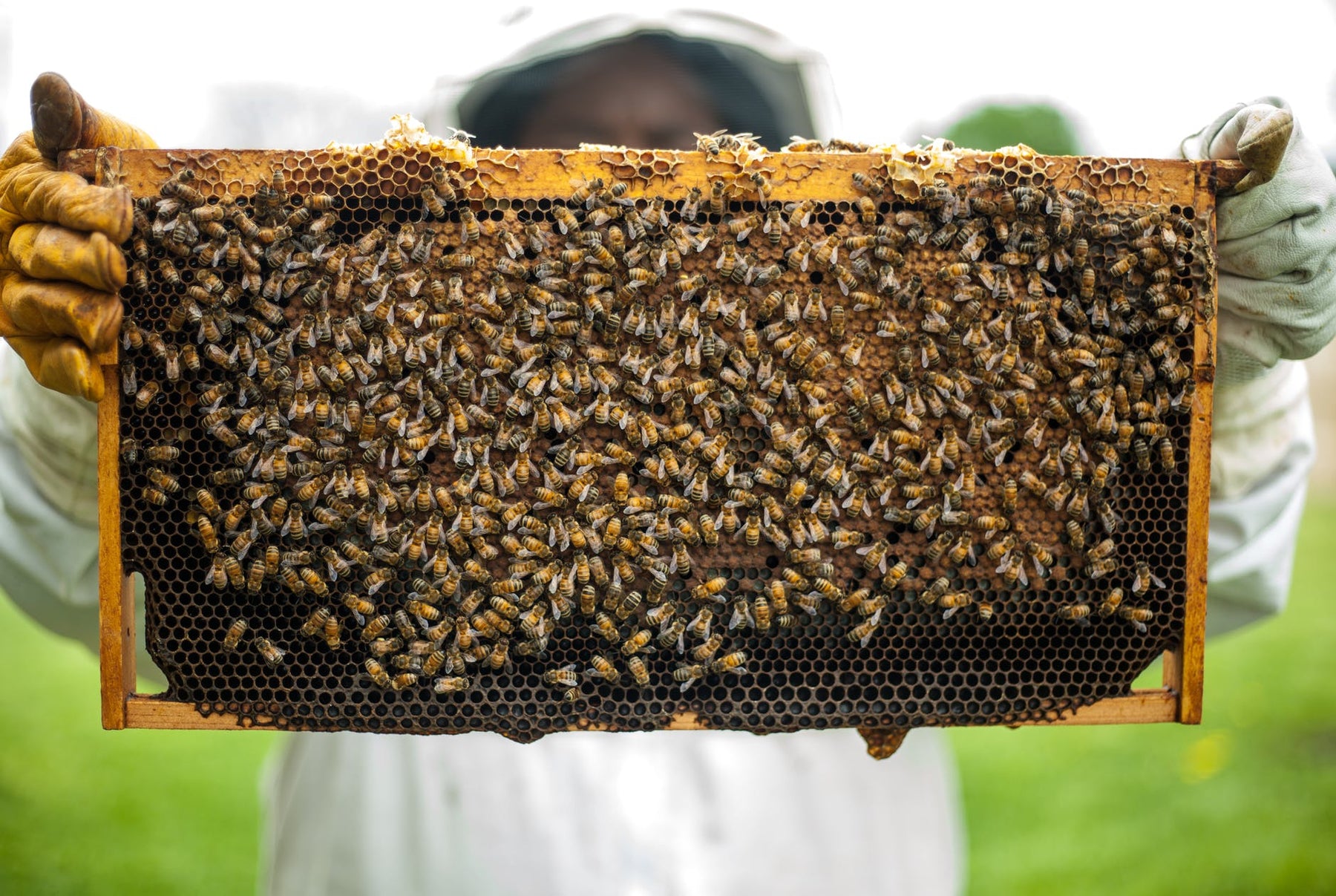
How to Get Started with Bees
Beekeeping is a fun and rewarding hobby. It’s quite satisfying to watch your bees move from flower to flower as they work your flowers and veggies. Your garden thrives and produces, and then — of course — you get to enjoy the produce of their labor — the honey and honeycomb.
Getting started may require a little time and effort; but once your colony is established, beekeeping is relatively easy. Let’s look at a few things you need to consider such as beehive boxes, beehive frames and other beekeeping supplies and requirements.
One of the first things you want to do is to find out as much as you can about keeping bees. Read as many books on beekeeping as you’re able and watch online videos to gain as much knowledge as possible.
Spring is the best time to start a new hive. This will give your bees time to establish the hive, store up excess honey for you to harvest and prepare stores to help them make it through the winter months.
Check Local Law Requirements
Contact your county extension agent or a local beekeeping association about ordinances related to beekeeping. Some cities have regulations related to how many hives you can have, space requirements between hives and distances required between property lines and your beehive boxes. If your city or community prohibits bees, don’t despair. Check with friends or local farmers in outlying areas who may be more than willing to let you keep a beehive on their property, especially if you offer them a little honey in return. Farmers will appreciate the benefits of bees pollinating their crops.
Determine the Right Location
After determining the requirements of any local laws concerning beekeeping, determine where you want to place your first hive. You’ll want to situate the hive away from areas that will have a lot of foot traffic. Additionally, make sure the hive has at least a 15-foot clearance at the front and sides for the bee’s flight path — entering and exiting the hive. If placing in an unfenced area, hiding it behind shrubs (continuing to maintain 15-foot clearance) may be beneficial — keeping the hive out of sight will help keep it out of harm’s way from curious kids and possible theft. The shrubs or a fence will also cause the bees to raise their flight path, keeping them from flying into the faces of anyone in their flight path. With thousands of bees coming and going, this can be very important. The bees will also need a nearby water source from which to drink … even something as simple as a birdbath will work as long as you keep it filled.
Determine Beehive Box Type
Modern beekeepers no longer use skeps, which often required the bees to be killed to harvest the honey. Instead, modern beehive boxes make it possible to easily harvest the honey without harming the bees. Modern beehive boxes can be vertical or horizontal. The most common types of vertical hives are the Langstroth and the Warre. The most common horizontal hive is the Top-bar.
Each type of hive has advantages and disadvantages; however, new beekeepers often begin with a vertical hive box.
Each of these boxes are filled with beehive frames which can be easily removed from the beehive box to harvest/extract the honey without harming the bees and to inspect the bees for disease. The number of frames that fit into a hive varies with the type of beehive box and the size of the box.
Purchase Beehive Supplies
Every new beekeeper will need to purchase beekeeping supplies. Many beehive supply companies offer beginner beekeeping kits which make it easy for a beginning beekeeper to have everything they need to successfully begin their beekeeping journey. These kits include the beehive box and frames, tools, a smoker and beekeeper suit — all the beekeeping supplies you’ll need to get started. Deluxe starter kits are also available.
Let us help you get started on the greatest hobby you'll ever experience.
General Questions About Beehives Supplies
1. How much does it cost to start beekeeping?
The initial cost of beekeeping can range from $200 to $500, depending on the equipment you choose. Beginner kits, which include essential supplies like beehive boxes, frames, a smoker, and protective gear, can be a good starting point. You may also need to budget for the purchase of bees and ongoing maintenance costs.
2. How do I choose the best type of bees for my hive?
Different bee species have various traits. For beginners, Italian bees are popular due to their gentleness and productivity. Carniolan bees are known for their resistance to disease and cold weather, while Russian bees are hardy and resistant to pests. Consider your local climate and specific beekeeping goals when choosing your bees.
3. What should I do if I get stung by a bee?
If stung, remove the stinger as quickly as possible by scraping it out with a flat object (like a credit card) to reduce venom injection. Clean the area with soap and water, apply ice to reduce swelling, and take an antihistamine if needed. Always monitor for signs of a severe allergic reaction, such as difficulty breathing or swelling of the throat, and seek medical attention immediately if these occur.



Leave a comment